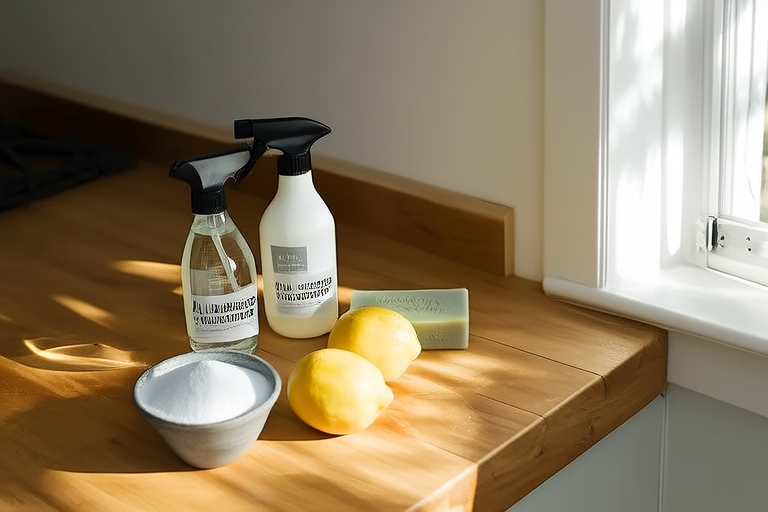DIY Home Surfaces Cleaning Solutions: Save Money and Stay Green
Introduction
Cleaning your home is essential for maintaining a healthy and pleasant living environment, but traditional cleaning products can be expensive and harmful to the planet. By making your own cleaning solutions, you can save money, reduce waste, and minimize your environmental impact. In this article, we’ll explore the benefits of DIY cleaning solutions, provide recipes for effective surface cleaners, and offer tips on how to integrate these eco-friendly practices into your daily routine.
The Benefits of DIY Cleaning Solutions
Cost Savings
One of the most immediate benefits of making your own cleaning solutions is the potential for significant cost savings. Store-bought cleaning products can add up quickly, especially if you have a large household or need to clean frequently. With just a few basic ingredients like vinegar, baking soda, and essential oils, you can create powerful and versatile cleaning solutions that last longer and cost less than commercial products.
Environmental Impact
Traditional cleaning products often contain harsh chemicals that can harm both the environment and your health. These chemicals may contribute to air pollution, water contamination, and even damage to wildlife. By opting for natural, homemade alternatives, you can reduce your carbon footprint and help protect the planet. Additionally, many DIY solutions are biodegradable and non-toxic, making them safer for pets and children.
Customization
Another advantage of DIY cleaning solutions is the ability to customize them to suit your specific needs. Whether you prefer a scent-free cleaner or one that leaves a fresh aroma, you can easily adjust the ingredients to achieve the desired results. This flexibility also allows you to address specific cleaning challenges, such as tackling tough stains or removing odors.
Recipes for Effective Surface Cleaners
All-Purpose Cleaner
An all-purpose cleaner is a versatile solution that can be used on a variety of surfaces, including countertops, floors, and appliances. Here’s a simple recipe:
- Ingredients: 1 cup white vinegar, 1 gallon warm water, 1 tablespoon liquid dish soap (optional), 10-15 drops of essential oil (optional)
- Instructions:
- Mix the vinegar and water in a large container.
- Add the dish soap if desired for extra grease-cutting power.
- Stir in the essential oil for a pleasant scent.
- Pour the mixture into a spray bottle and use it as needed.
Glass Cleaner
A streak-free glass cleaner is perfect for windows, mirrors, and other reflective surfaces. Here’s how to make one:
- Ingredients: 1/2 cup rubbing alcohol, 1/2 cup water, 1 teaspoon dish soap, 10-15 drops of essential oil (optional)
- Instructions:
- Combine the rubbing alcohol, water, and dish soap in a spray bottle.
- Add the essential oil if desired.
- Shake well before using.
Wood Polish
For wood surfaces like tables, cabinets, and floors, a natural polish can bring out the beauty of the grain while protecting the finish. Here’s a simple recipe:
- Ingredients: 1/2 cup olive oil, 1/4 cup white vinegar, 10-15 drops of lemon essential oil (optional)
- Instructions:
- Mix the olive oil and vinegar in a small bowl.
- Add the lemon essential oil if desired.
- Apply the mixture with a soft cloth and buff to a shine.
Tips for Integrating Eco-Friendly Practices
Storage and Labeling
Proper storage and labeling are crucial when using homemade cleaning solutions. Store your mixtures in clearly labeled containers, preferably in a cool, dry place away from direct sunlight. This will help maintain their effectiveness and prevent accidental misuse.
Testing New Formulations
Before applying any new cleaning solution to a surface, it’s wise to test it on a small, inconspicuous area first. This ensures that the solution won’t cause any damage or discoloration. If you’re unsure about the safety of a particular ingredient, consult online resources or a professional for guidance.
Recycling and Reusing Containers
To further reduce waste, consider recycling or reusing containers for your DIY cleaning solutions. Old spray bottles, pump dispensers, and jars can be cleaned and repurposed for storing your homemade products. This not only saves money but also minimizes the amount of plastic waste you generate.
Case Study: A Green Cleaning Routine
Let’s take a look at how Sarah, a busy mother of two, transformed her cleaning routine by incorporating DIY solutions. Sarah was concerned about the chemicals in her store-bought cleaners and wanted to find more affordable and environmentally friendly options. She started by making an all-purpose cleaner using the recipe provided earlier. Within weeks, she noticed a reduction in her cleaning expenses and a noticeable improvement in indoor air quality.
Sarah also began using a wood polish made from olive oil and vinegar to care for her hardwood floors. Not only did the floors look better, but they were easier to maintain. She even shared her recipes with friends and family, inspiring others to adopt greener cleaning habits.
Conclusion
By making your own cleaning solutions, you can save money, reduce waste, and protect the environment. From all-purpose cleaners to specialized formulations for glass and wood, there are countless ways to create effective and eco-friendly cleaning products. Remember to store your solutions properly, test new formulations carefully, and recycle or reuse containers whenever possible. Incorporating these practices into your daily routine will not only benefit your wallet but also contribute to a healthier planet.
So, why wait? Start experimenting with these DIY cleaning solutions today and enjoy the many benefits of a green cleaning routine.
